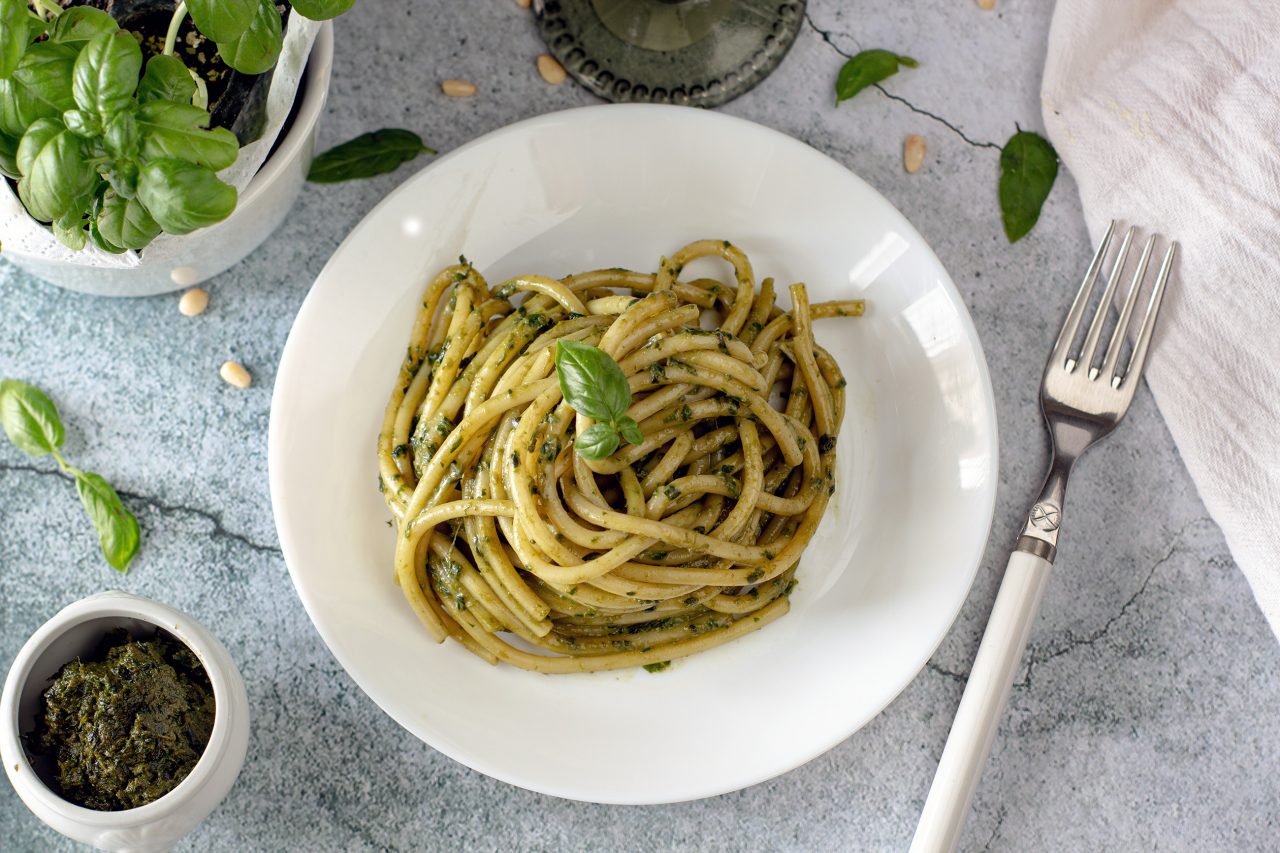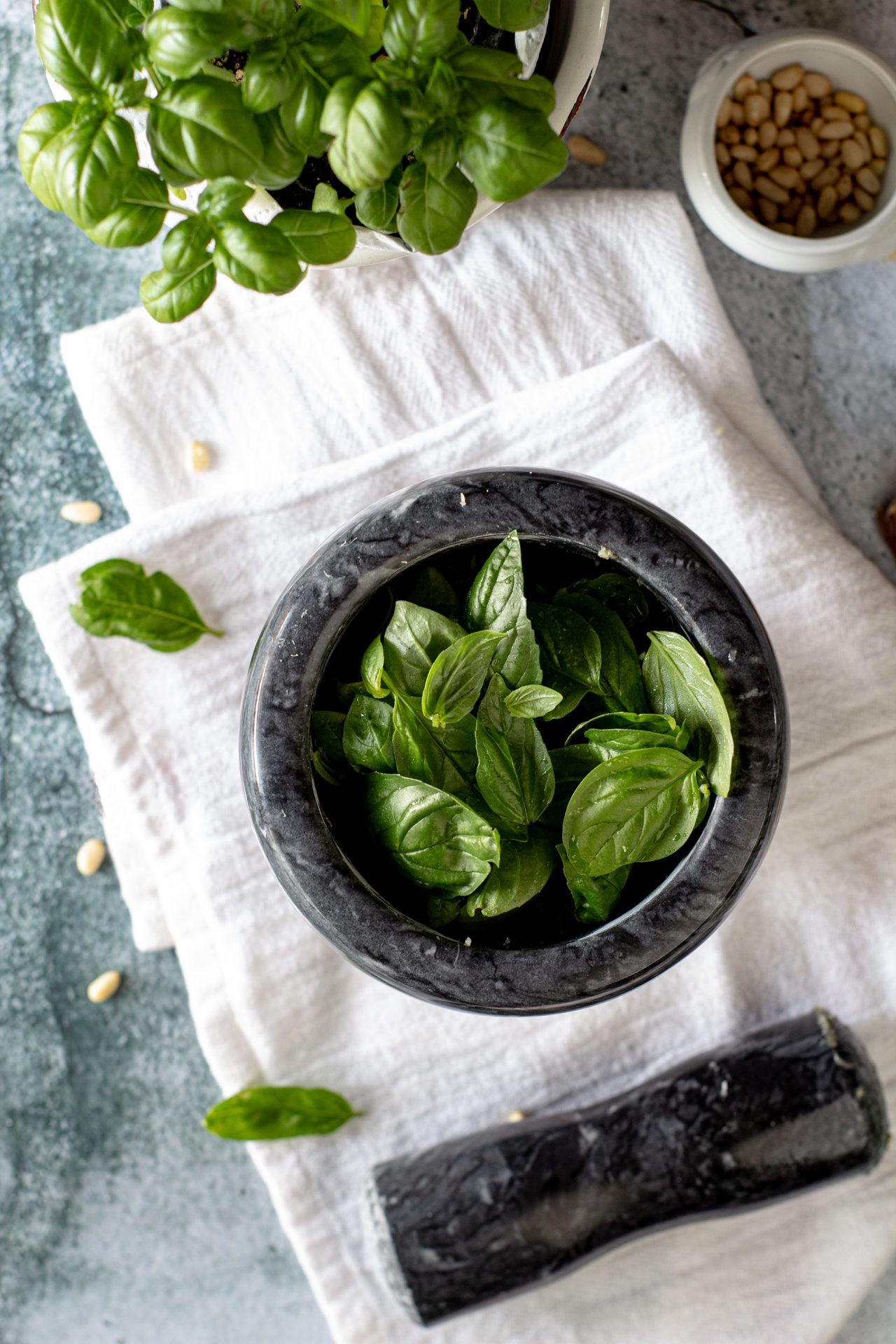No products in the basket.
Sometimes simple dishes cooked well are simply the best.
Ingredients
- 80 g of fresh basil
- 1 clove of garlic without the core
- 1 g of coarse salt
- 10 g of pine nuts
- 20 g of parmesan cheese
- About 25 g of delicate extra virgin olive oil
- 250 g of spaghetti or pasta of your choice
Method
Tear the basil leaves from their stems and wash them under running water then dry them thoroughly by patting gently with a paper towel before starting to make the pesto.
Peel the garlic clove and make sure the core is removed then work it together with salt in a mortar and pestle. Adding the pine nuts and working it all into a creamy texture.
Add the basil a little at a time and work the pestle with a rotating motion. It may take a little longer, but taking your time will help release the basil’s essential oils and reduce it until it is a creamy and uniform.
Add the Parmesan and work for a few more minutes, and finally add the extra virgin olive oil. The amount of oil needed will be determined by how much oil is released by the basil.
You are aiming for a balanced, soft and compact basil pesto which is not drowning in oil.
And so, with the basil pesto is ready, cook the pasta in salted water. When soft drain but keep some of the cooking water, aside and mix the pesto into the pasta with the heat-off. If necessary, add a few spoons of the hot cooking water in order to make it smooth and creamy.
Serve immediately.
Worth noting the following tips for an excellent pesto
- Choose Genoese basil, the one with small leaves and make sure the leaves are all not too ripe. Avoid basil that is already in flower as this will make the pesto too strong in flavour.
- As to Cheeses, you can use half pecorino and half parmesan, but if you prefer a delicate flavour then use only parmesan.
- With the Oil, don’t add too much opt for a light and fruity extra virgin olive oil.
- If you use a mortar, make sure that the pestle is large enough to facilitate the pulping of the basil and that if it is possible use one made of marble.
- Whether you’re using a mortar or food processor to make the pesto, make sure it is cold to avoid heating the ingredients.
- Pesto keeps very well in the fridge for 3 to 4 days in a closed glass container, and with a light layer of oil covering the pesto to prevent oxidation.

